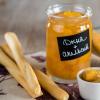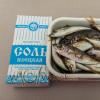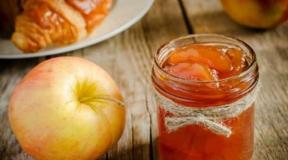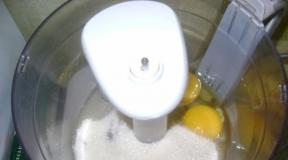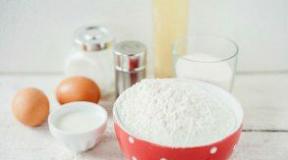The best recipes for tomatoes under a nylon lid. How to prepare tomatoes under a nylon lid: advice from experienced housewives
These pickles taste like barrel cucumbers, they are moderately salted, with a slight sourness. The recipe for cooking in three-liter cans is not at all complicated, tight nylon lids are used, pickles are prepared in several stages. Such a crispy winter preparation is ideal for preparing delicious pickle, salad "Olivier", "Vinaigrette". Many people will appreciate them as an appetizer with vodka, in combination with herring and black bread, a win-win.
Choose small fresh cucumbers with pimples for pickling; they must be firm. We do not cut the ponytails. The most common rock salt is used. No vinegar is used in the recipe.
In this recipe, we use the cold method of pickling cucumbers under a nylon lid for the winter.
Taste Info Cucumbers for the winter
Ingredients for 6 three-liter cans:
- Fresh, firm ground cucumbers (medium size) - 10 kg;
- salt (not iodized) - 200 g;
- filtered water - 10 l;
- fresh and dry dill - 1 bunch;
- bay leaf - 10 pcs.;
- garlic - 10-15 cloves.

How to cook pickled cucumbers under a nylon lid for the winter
Before proceeding with conservation, you need to carry out a number of preparatory work, namely: prepare the jars and lids (wash and sterilize) and wash the cucumbers (carefully and carefully), peel the garlic and rinse the dill. Leave the clean cucumbers in the water for a few hours to make them even crisper. In the meantime, the vegetables are taking water procedures, you can prepare a cold pickle. To do this, add rock salt to water at room temperature and stir until completely dissolved.

At the bottom of a 3-liter jar, put fresh dill, some chopped dried herbs and garlic cloves.

For this recipe, you do not need to dry the cucumbers, but you can simply drain the water in which the vegetables have been for several hours and start placing them in the jar immediately. Trim the ponytails as desired, it doesn't really matter. Try to fit them tightly, one by one.

Be sure to put the filled jar in a deep container (bowl or plate) and fill the cucumbers with brine to the very top, cover with a lid. For a fermented cooking process, store the jar in a shaded area for 2 days.

During this time, the cucumbers will acquire that unique "barrel" taste. The main work has been done and the brine is no longer needed. It should be drained into a sink and the vegetables should be rinsed several times. Top with fresh dill, garlic and bay leaves. Fill with clean water.

The final stage of this conservation is the clogging of the can. To do this, fill the nylon lid with hot water for 1-2 minutes, so the plastic will become more elastic and pliable. Then you need to act quickly. Remove the boiling water lid with tongs, shake off excess water and close the jar of cucumbers tightly. Sometimes this does not work the first time, so you have to repeat all the stages with the lid.

It remains only to check whether our container is tightly sealed, and whether air is getting into it, to do this, just turn the jar upside down. Water should not seep out from under the cover, which will mean complete tightness. Store the blanks for the winter in a cool, dark place.
After about 10-14 days, our pickles under a nylon lid will be completely ready to eat.

Cooking tips:
This recipe has several cooking variations.
- In one embodiment, the brine is not drained, but simply closed with a nylon lid and that's it. The disadvantage of this recipe is that more often such a product is acidified and the cucumbers turn into porridge. Although, if you choose the right vegetables, medium-sized, not overripe, remove the salted cucumbers in the cold in time, you can achieve an excellent result and get delicious "barrel cucumbers".

- In another version, the brine is poured into a saucepan and boiled for 1 minute, then the boiling marinade is poured into jars and immediately closed. This does not give the cucumbers an opportunity to oxyderate, but there is a threat to digest and eventually lose that amazing crunch.
- In addition to dill, you can put currant, cherry, horseradish leaves in a jar. This will add density and crunch to the cucumbers.

In order for home preservation to be preserved until the very cold weather intact, you need to be very careful about the preparation of containers and clearly figure out for yourself how to close the jars for the winter so that there is no mold on the contents. The containers with cucumbers and tomatoes can be sealed with ordinary tin or metal screw lids, or limited to the simplest nylon lids, if this is, of course, allowed by the recipe. For jam, the rules are not so strict and it is quite acceptable to keep some types of sweet preparations even without iron lids and cover them with waxed food paper so that condensation does not form. Below we will take a closer look at each of the methods mentioned, and after studying the article, you can choose the most suitable option for closing the cans for the winter.
How to close cans - what are the lids
Before you do home preservation and think about how to close the jars securely and without much hassle, let's look at what lids are.

How to close screw-top jars correctly
Many housewives are interested in how to close jars with screw lids correctly. Meanwhile, this process is not complicated at all and does not take much time. First of all, products are inspected for defects. The surface should be free of dents, scratches and rust spots. Clean lids without errors must be boiled in water for at least 10 minutes. This should be done shortly before the start of the canning process. Sterilized "rifles" are carefully removed from the water with special tweezers and laid out on a dry and clean kitchen towel.

Jars, sealed with screw caps, are kept in a cool, well-ventilated place. To prevent condensation from forming on the metal surface, the temperature in the storage should not fluctuate sharply. Rolls containing a small amount of sugar, unsweetened compotes and canned food, prone to fermentation, are sent to the refrigerator or deep cellar.
To check the tightness of the twist, cans with hot contents are turned over and cooled naturally. If the rim of the lid is not moistened, the workpieces are removed to the pantry for a period of 6 months or more.
How to close jam jars to keep mold free
Often, whitish mold spots form on the surface of sweet preservation, spoiling the appearance of the product and impairing the taste. Faced with such a problem, housewives begin to wonder how to protect the workpieces and how to close the jars of jam so that there is no mold. The answer to this question is extremely simple and refers to the so-called "grandmother's" methods of preserving homemade preparations.

To prevent fruit jams, preserves and confitures from spoiling, you need to cut out a circle from food parchment or waxed baking paper to the size of the neck of a jar, soak it with strong alcohol (whiskey, vodka, rum, etc.), put it on top of the jam and roll it up. The paper will absorb condensation and keep it rolling in perfect condition.
How to close jars of cucumbers with nylon lids

Wondering how to close jars of cucumbers for the winter with nylon lids? In principle, the rules are very simple and no tools at hand are required for this. The only thing that needs to be done is to sterilize the lid in boiling water. After heat treatment, it will become plastic and can be easily put on a jar, and when it cools down, it will be pulled inside and ensure high-quality sealing of the contents.
How to close jars of tomatoes for the winter with iron lids
The video is very intelligible and tells in all the details how to close cans of tomatoes for the winter using a tin key. The option of sealing containers with a threaded neck is described separately. The author points out that great care must be taken when using the screw cap. So that there is no mold on the jam, and the preservation with cucumbers or other vegetables does not sour, it is necessary to tighten the lid tightly enough, but try not to overdo it and not to rip the thread. Well, if, even after viewing, the process of closing cans with metal products is still scary, you can try to do without lids at all and protect your seams with thick edible paper. True, in this form they will not stand for a very long time and without a refrigerator.
Do you make a lot of preparations for the winter?
Poll Options are limited because JavaScript is disabled in your browser.
At the time of the blanks, it is important to stock up not only with food, but also with high-quality sealing caps, because they will help keep the blanks throughout the winter.
To choose a glass jar, you do not need any special knowledge: the main thing is to determine the volume of the container and its convenient shape. But everyone who is engaged in canning should know about the choice of canning lids, because the success of the canning process will depend on the material from which they are made, on health safety, convenience and quality.Tin lids "SKO". These covers are familiar to everyone. They are always in demand due to their low prices. These lids fit almost all glass jars. Before you buy, pay attention to the inner coating - a high-quality cover should have a varnish. If you decide to save on cost, you run the risk of getting a terrible tin taste in the blanks, and even poisoning the body if stored for a long time. To check the lid - you need to wipe the inner surface with a cotton pad dipped in acetone - if a yellow or green mark remains, then the lid will react with the contents of the can, gradually poisoning it. Be sure to purchase a seaming wrench if you do not have one, and do not use these covers many times. Do not buy tin lids "in reserve" - the shelf life of such lids is only 3 years.
Twist-off lids. Practical and convenient lids for reusable use, there is one requirement - they are suitable for threaded cans. It is advisable to check the cover for reliability before rolling. To do this, fill the container with water, screw on the lid and then turn it over. If water leaks, such a cover cannot be used, if not, you can preserve it. The main advantage of such lids is their affordable cost, no seaming machine is needed and convenient storage after opening the can. It is also advisable to check the lacquer coating inside the lid.
Polyethylene (plastic) covers. Such lids are disposable; after placing them in hot water, they expand and then put on the jar. It is recommended to store pickles with such lids in the cellar, but for jam you are unlikely to find the best lid for the price and ease of use.
Now you know which lids are best for home canning. It is advisable to check all jars for chips and cracks before starting conservation. Also, do not forget to buy these "saviors" to facilitate the sterilization process: a disc holder in a pan and a jar gripper. You are now ready! So, it's time to start home canning, because you can't find such "goodies" in the store.
Signs of quality seaming caps
The ideal seaming lids are made of food grade metal. In appearance, the tin and aluminum covers are almost indistinguishable, but the latter springy when you press on them with your hand.
Lids suitable for seaming are coated with an acid-resistant varnish. It is desirable from both sides, but from the inside it is obligatory! Otherwise, the metal will corrode and spoil the workpiece.
Ideal seaming caps have a rubber ring that fits snugly around the circumference of the cap in a groove. Oxidation processes are resisted by yellow tin lids. White unvarnished, tinned with tin, suitable only for covering products with low acidity (jam, compotes, preserves) and not suitable for canning fruits and berries with a bright color. Aluminum lids are used for all types of canned food.
Despite the fact that metal seaming lids are disposable, some housewives manage to reuse them. Even devices have been developed to remove the caps with minimal damage. And yet, giving them a second life is undesirable for hygienic reasons.
If you don’t remember when you got the covers, stretch the rubber seal on one of them. If it has retained its firmness and elasticity, the lids are usable. If not, throw it away: changes in temperature and humidity have done their dirty work.
Pay attention to this:
 |
 |
 |
| All about garden plants | ||
 |
 |
 |
Along with metal covers, nylon covers are very popular among summer residents who make blanks for the winter. They can be used to close cans from 0.5 l to 3 l. The peak of their popularity came at the end of the 20th century.
The new nylon cap, when used correctly, will close the can as tightly as a metal seaming cap. At the same time, you can easily open and close workpieces in winter as needed (the metal lid opens only once).
Before use, the nylon cap is immersed in boiling water. for 10-20 seconds, where it is not only sterilized, but also softened additionally for a short period, which makes it possible to hermetically close the jar with a minimum of effort. In this case, no special devices are required (for example, a seamer, etc.).
Many people write that it takes 2-3 minutes to boil. I think this is wrong, you can just spoil the covers, and subsequently their tightness will suffer.
Before use, it is advisable to dry the sterilized nylon caps so that condensation does not accumulate under them after closing the cans.
You can buy nylon caps at your local hardware store or market. I recommend using them primarily for closing jam. As a rule, we eat it slowly (gradually) and it is better that the jar does not remain open until the preparation is completely consumed.
The instruction on the nylon lid reads: "For food. Before use, wash with detergent. Before closing the lid, hold it in boiling water for no more than 15 seconds."

The appearance (standard) of a nylon cover from the times of the USSR (compare with what is sold in stores today).
The main advantages of capron caps:
- easy to put on and take off;
- multiple use;
- affordable price;
- do not rust and do not emit harmful substances into the workpieces.
Also, under nylon lids, you can harvest cucumbers, tomatoes, bell peppers, zucchini, etc. for the winter. Everything will be kept intact for a long time.







